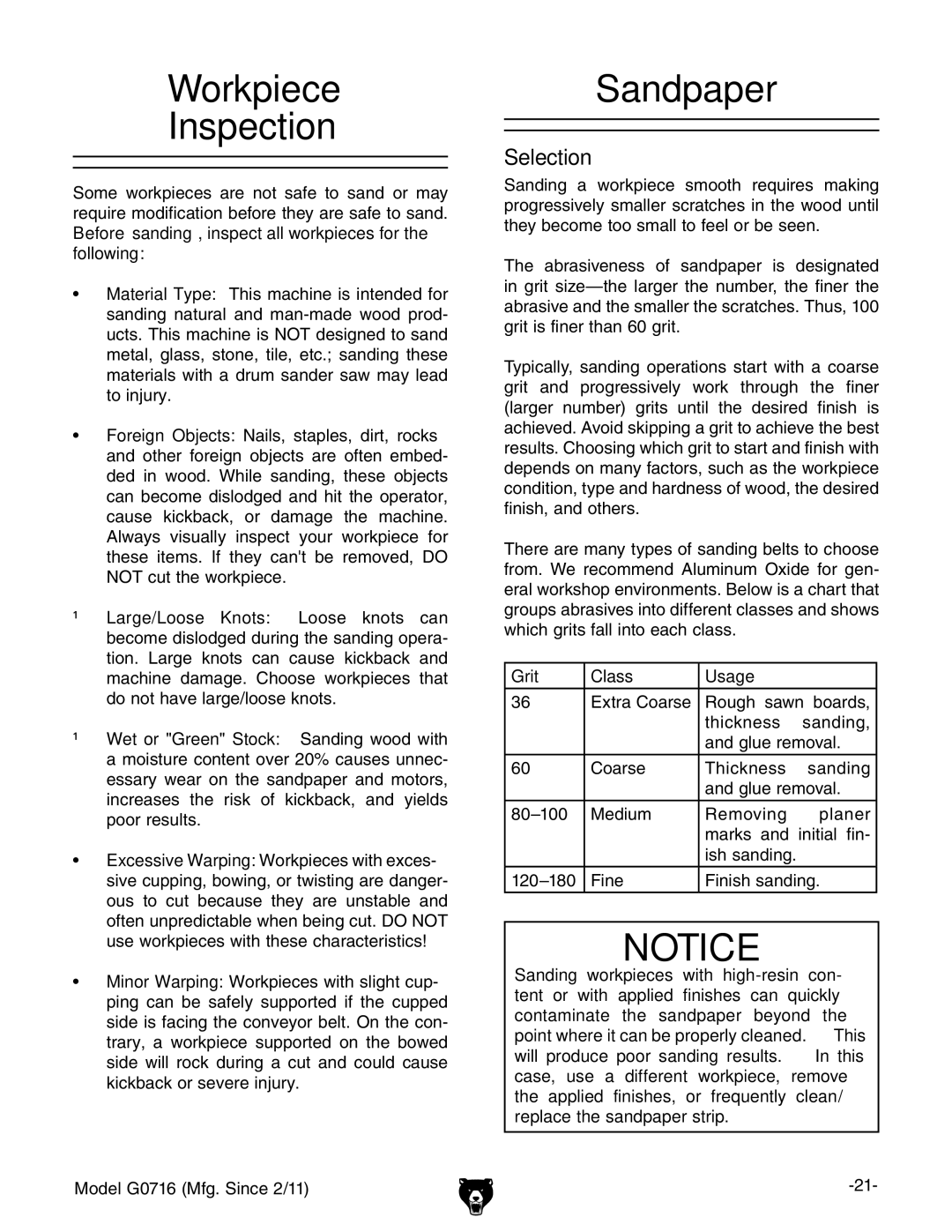G0716 specifications
The Grizzly G0716 is a versatile and robust wood lathe designed for both amateur and professional woodworkers. With its powerful motor and impressive features, this lathe stands out in the woodworking community for its reliability and performance.At the heart of the Grizzly G0716 is a 1 HP motor, which delivers high torque and allows for smooth operation at various speeds. The lathe offers variable speed capabilities ranging from 400 to 3,600 RPM, providing woodworkers with the flexibility to adjust the speed based on the material and application. This feature is particularly beneficial for turning different types of wood, ensuring optimal results for both roughing and finishing cuts.
The G0716 has a sturdy cast iron construction, which contributes to its stability and minimizes vibrations during operation. This solid build not only ensures durability but also enhances the overall turning experience, leading to more precise and consistent results. The spacious bed length of 32 inches provides ample space for working on larger projects, making it suitable for various applications, from bowls to larger spindles.
One of the standout characteristics of the Grizzly G0716 is its user-friendly design. It includes a sliding tailstock that allows for easy adjustments and precise alignment, facilitating seamless operation. The quick-release tailstock and easy-to-read indexing head enhance usability, allowing woodworkers to switch between different projects without unnecessary delays.
In terms of safety, the lathe is equipped with a safety switch that prevents accidental start-up, ensuring that users remain protected during operation. Additionally, the machine's well-placed controls allow for convenient access, so operators can stay focused on their work while easily making adjustments as needed.
The G0716 is compatible with a variety of tools and accessories, increasing its versatility and making it a valuable addition to any workshop. Whether you are a beginner looking to explore the world of turning or an experienced woodworker seeking a reliable lathe for your projects, the Grizzly G0716 offers a blend of power, precision, and practicality that enhances the woodworking experience. Its combination of features, safety elements, and robust construction sets a standard for quality lathes in its class.

